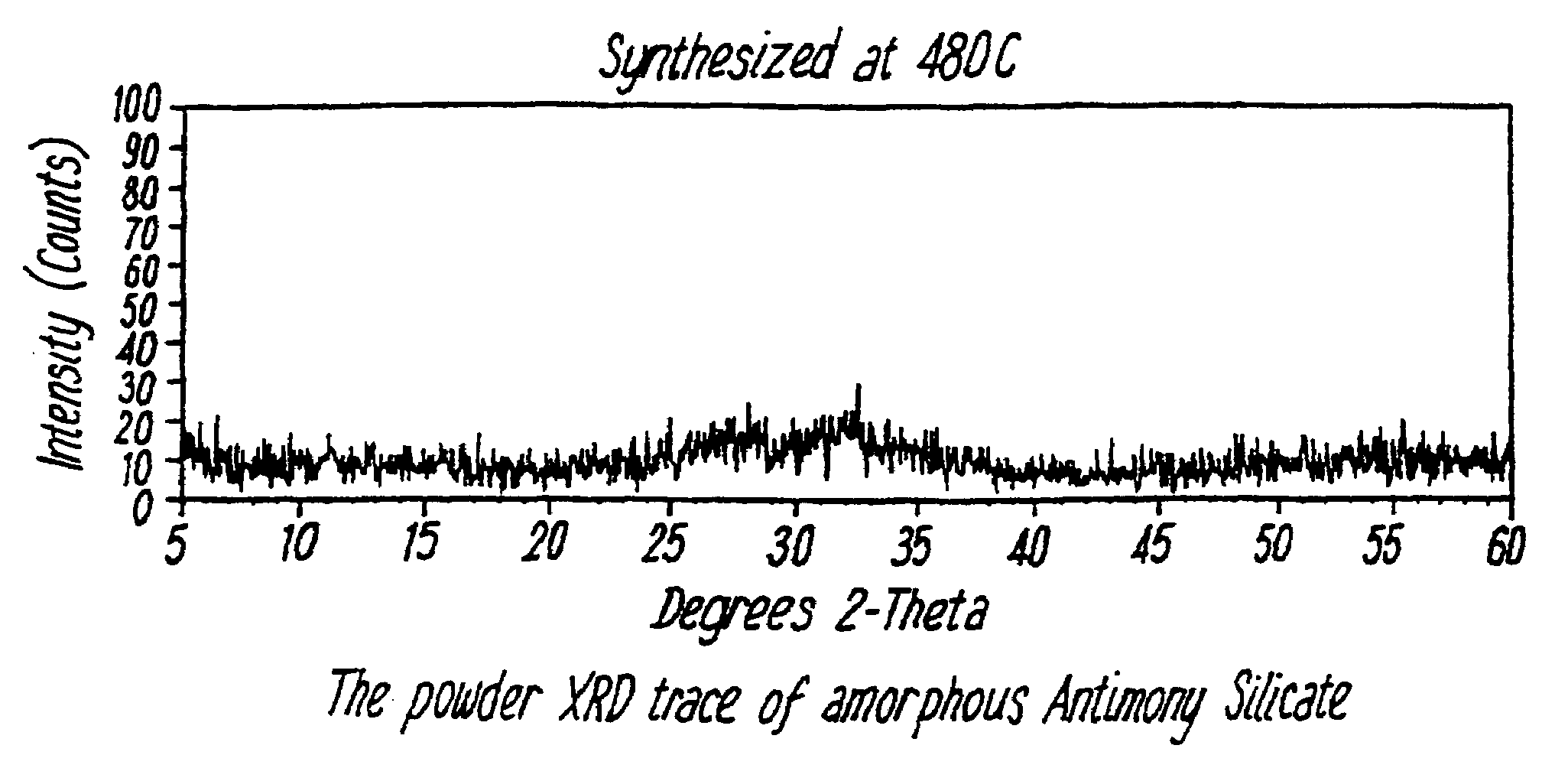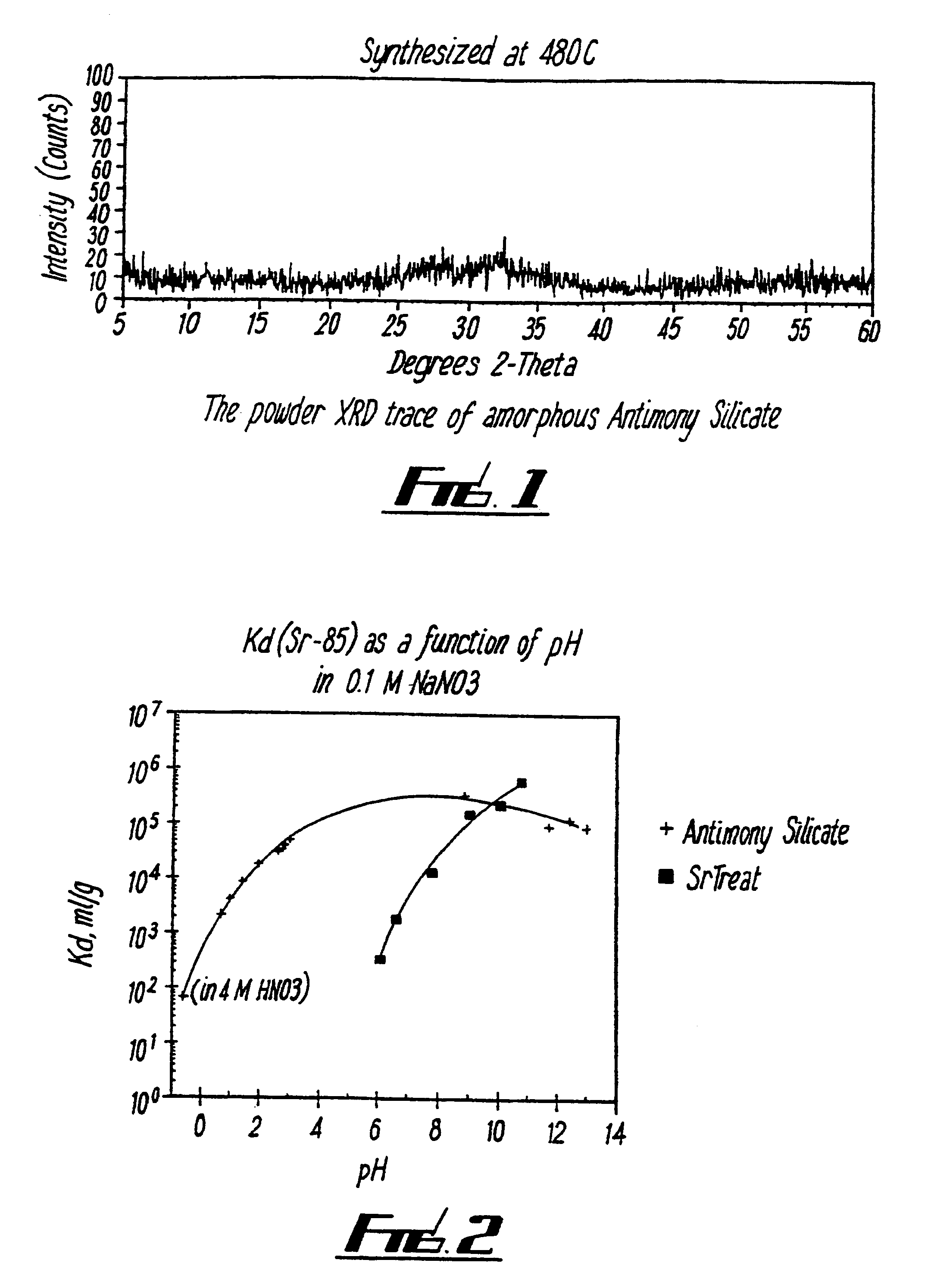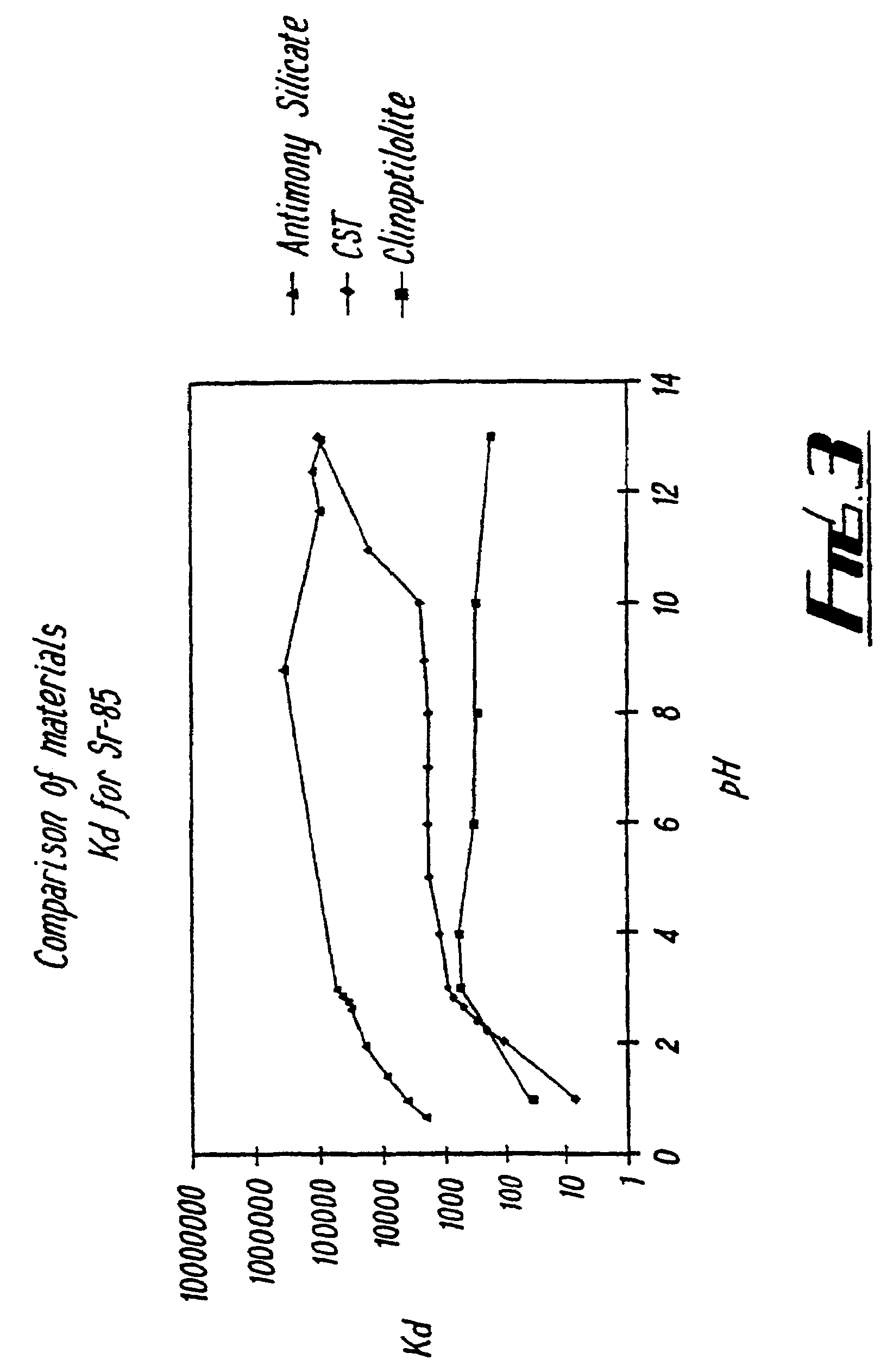Method of extracting metal ions from an aqueous solution utilizing an antimony silicate sorbent
a technology of antimony silicate and sorbent, which is applied in the direction of cation exchangers, inorganic chemistry, water/sludge/sewage treatment, etc., can solve the problems of affecting the uptake of strontium, strontium ions are difficult to remove by known ion exchange techniques, and certain radionuclides can be more difficult to remov
- Summary
- Abstract
- Description
- Claims
- Application Information
AI Technical Summary
Benefits of technology
Problems solved by technology
Method used
Image
Examples
Embodiment Construction
[0063](1) Basic Preparation
[0064]Antimony silicates were prepared by the following two methods.
[0065]Method A
[0066]5.269 g of KSb(OH6) was dissolved in 360 ml distilled H2O and this was then added under stirring to 4.17 g of TEOS dissolved in ethanol. 2.75 ml concentrated HNO3 was then added as polymerisation catalyst, and the mixture stirred for 1 hour at 77° C. The product was washed with distilled water and dried. The dried product was then heated to form the desired material. The materials were found to be amorphous under XRD analysis (see FIG. 1). Table 1 shows the Kd values for various ions for a sample which was heated to 450° C.
[0067]Method B
[0068]SbCl5 was mixed with sodium silicate, Na2Si3O7, in the presence of 4M HCl with the pH maintained at about 1. This formed a gel-like product after being left at 60° C. overnight. The product was filtered and washed and dried and the XRD trace showed that the material was crystalline.
[0069]The results described below were obtained us...
PUM
| Property | Measurement | Unit |
|---|---|---|
| temperature | aaaaa | aaaaa |
| mole ratio | aaaaa | aaaaa |
| temperature | aaaaa | aaaaa |
Abstract
Description
Claims
Application Information
 Login to View More
Login to View More - R&D
- Intellectual Property
- Life Sciences
- Materials
- Tech Scout
- Unparalleled Data Quality
- Higher Quality Content
- 60% Fewer Hallucinations
Browse by: Latest US Patents, China's latest patents, Technical Efficacy Thesaurus, Application Domain, Technology Topic, Popular Technical Reports.
© 2025 PatSnap. All rights reserved.Legal|Privacy policy|Modern Slavery Act Transparency Statement|Sitemap|About US| Contact US: help@patsnap.com



